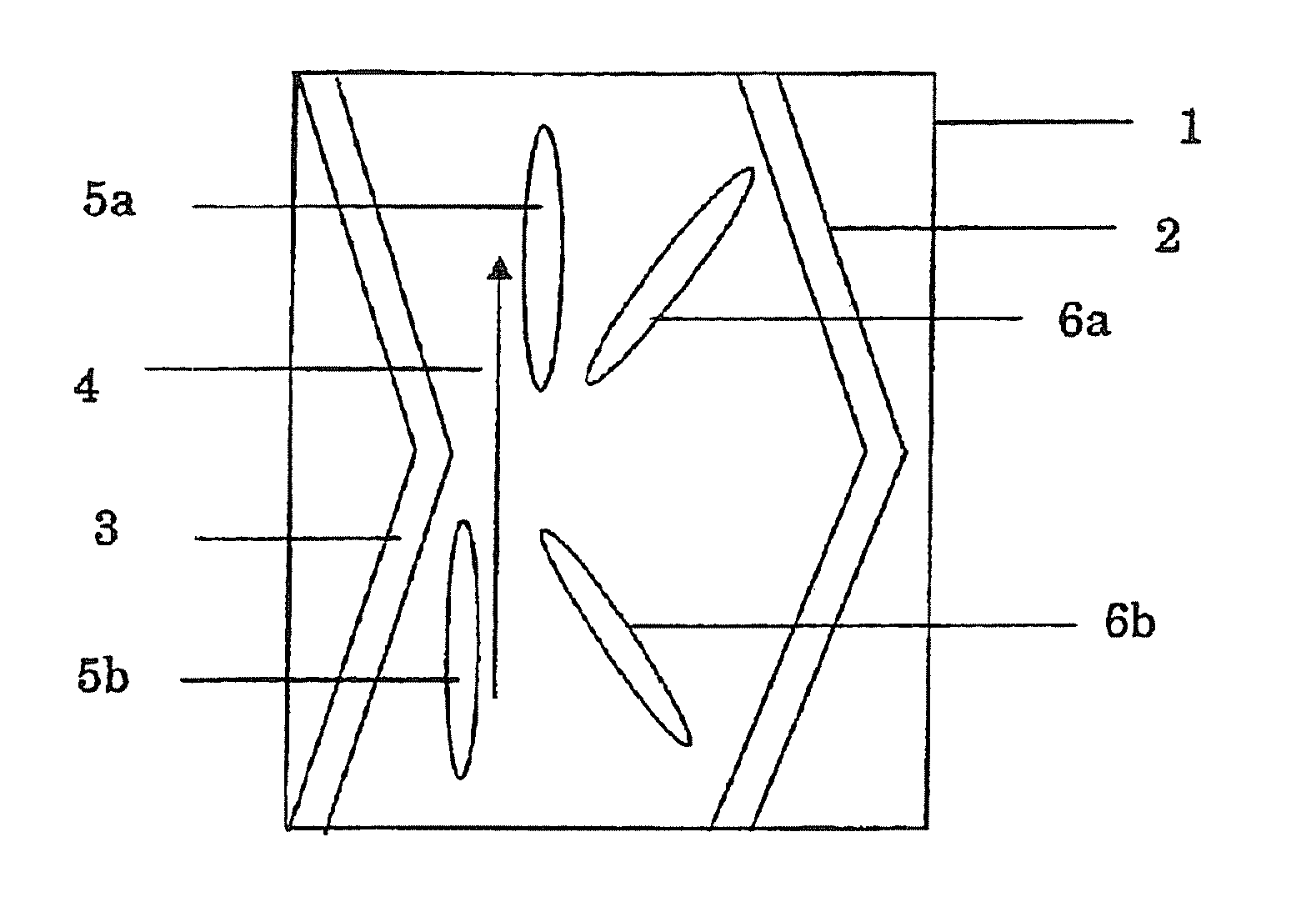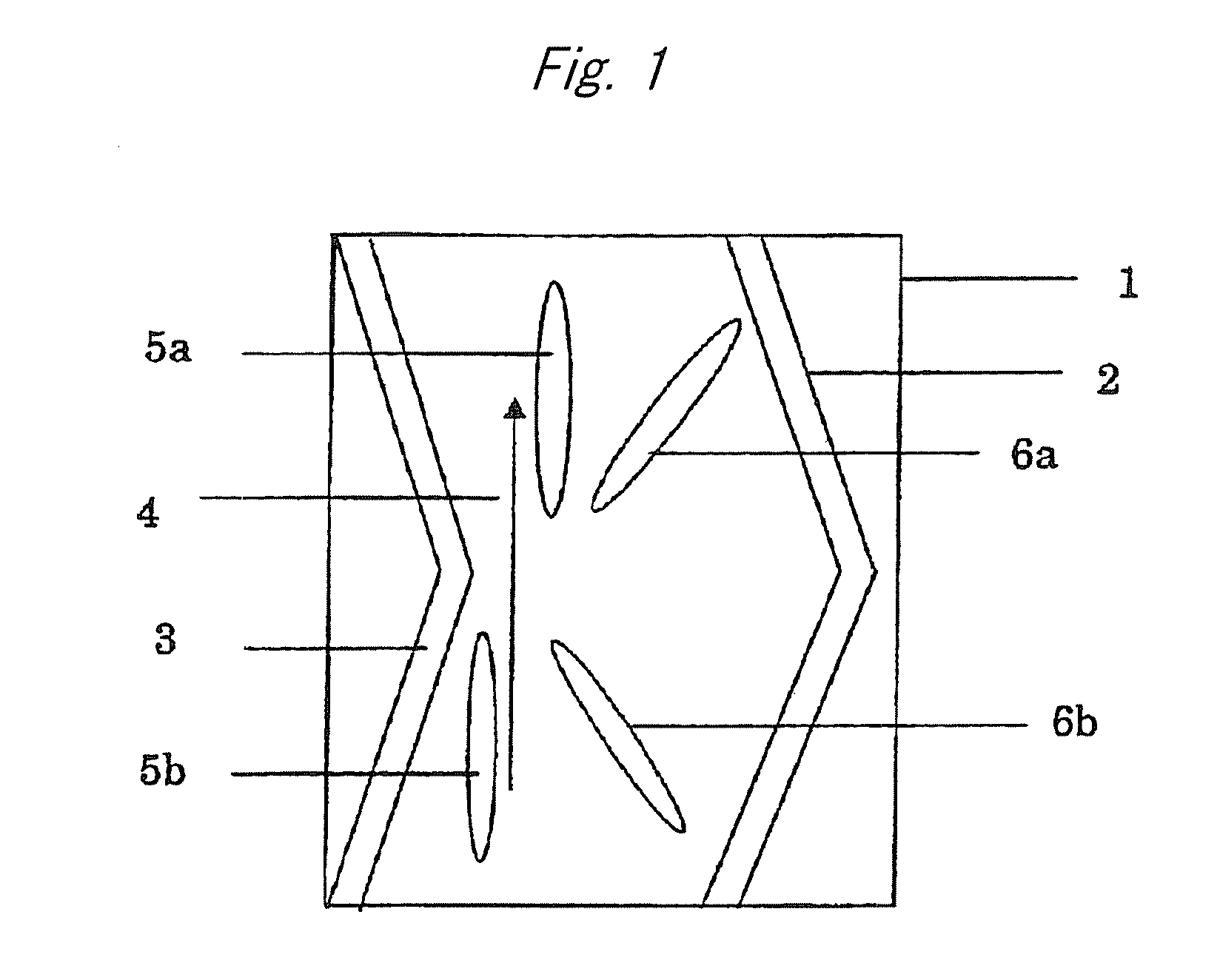Cellulose Compound Film, Optical Compensation Sheet, Polarizing Plate, and Liquid Crystal Display Device
- Summary
- Abstract
- Description
- Claims
- Application Information
AI Technical Summary
Benefits of technology
Problems solved by technology
Method used
Image
Examples
example 1
[0430] Cellulose compounds, as shown in Table 5, were synthesized as follows: The cellulose compound that can be used in the present invention was prepared from, as a starting, material, cellulose acetate having an acetyl substitution degree of 2.45 (manufactured by Aldrich), cellulose acetate having an acetyl substitution degree of 2.41 (trade name: L-70, manufactured by Daicel Chemical Industries, Ltd,), or cellulose acetate having an acetyl substitution degree of 2.14 (trade name: LM-80, manufactured by Daicel Chemical Industries, Ltd.), through reaction with a corresponding acid chloride. Further, cellulose acetate low in acetyl substitution degree was prepared, by synthesizing, an intermediate having an acetyl substitution degree of 1.80 from, as a starting material, microcrystalline cellulose (manufactured by Aldrich) by the method as described in the following Synthetic Example 1, and then reacting the intermediate with a corresponding acid chloride.
[0431] In Table 5, TAC 1 ...
synthetic example 1
Synthesis of Cellulose Acetate (Acetyl Substitution Degree 1.80)
[0434] To 50 parts by mass of cellulose (manufactured by Aldrich, microcrystalline cellulose, hardwood pulp), 50 parts by mass of acetic acid was sprayed, and left standing for 3 hours at room temperature. Separately, a mixture of 3.5 parts by mass of sulfuric acid, 331 parts by mass of anhydrous acetic acid, and 319 parts by mass of acetic acid, as acylating agents, was provided, the mixture was then cooled to −10° C. and added to the reaction vessel containing the cellulose which had been subjected to the above-described pretreatment. After a lapse of 1 hour, the internal temperature of the vessel was increased to 40° C., followed by stirring for 1 hour, then the liquid temperature was adjusted to 30° C., followed by stirring to continue until the solution viscosity measured at 30° C. would reach 1,900 cP.
[0435] Then, the reaction vessel was cooled on an ice-water bath at 0° C., to which 183 parts by mass of a 50% a...
synthetic example 2
Synthesis of M-001
[0438] To a 1-L three-necked flask equipped with a mechanical stirrer, a thermometer, a cooling tube, and an addition funnel, 40 g of cellulose acetate (acetyl substitution degree 2.45, manufactured by Aldrich), 46.0 mL of pyridine, and 300 mL of methylene chloride were placed, followed by stirring at room temperature. Thereto, 62.4 mL of benzoyl chloride was slowly added dropwise, and after the completion of the addition, the mixture was stirred for another 6 hours at room temperature. After the reaction, the reaction solution was poured into 4 L of methanol while vigorously stirred, to deposit a white solid. The white solid was filtered by suction filtration, and washed three times with a large amount of methanol. The resultant white solid was dried overnight at 60° C., then dried under vacuum for 6 hours at 90° C., to obtain the target cellulose compound (M-001) as white powder (45.8 g, yield 98%).
PUM
| Property | Measurement | Unit |
|---|---|---|
| Temperature | aaaaa | aaaaa |
| Fraction | aaaaa | aaaaa |
| Fraction | aaaaa | aaaaa |
Abstract
Description
Claims
Application Information
 Login to View More
Login to View More - R&D
- Intellectual Property
- Life Sciences
- Materials
- Tech Scout
- Unparalleled Data Quality
- Higher Quality Content
- 60% Fewer Hallucinations
Browse by: Latest US Patents, China's latest patents, Technical Efficacy Thesaurus, Application Domain, Technology Topic, Popular Technical Reports.
© 2025 PatSnap. All rights reserved.Legal|Privacy policy|Modern Slavery Act Transparency Statement|Sitemap|About US| Contact US: help@patsnap.com



